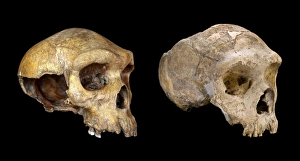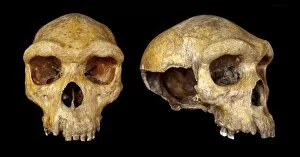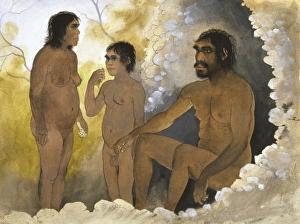Rhodesian Man Collection
The Rhodesian Man, also known as the Broken Hill Man, is a fascinating specimen that sheds light on our ancient human ancestors
All Professionally Made to Order for Quick Shipping
The Rhodesian Man, also known as the Broken Hill Man, is a fascinating specimen that sheds light on our ancient human ancestors. Discovered in 1921 in what is now Zambia, the Broken Hill skull belongs to Homo heidelbergensis, an extinct species closely related to both Neanderthals and modern humans. This remarkable find provides valuable insights into our evolutionary history. Believed to be around 300, 000 years old, the Broken Hill skull exhibits distinct features of Homo heidelbergensis - a robust build with a large braincase. Its discovery has greatly contributed to our understanding of this enigmatic hominin species. Homo heidelbergensis played a crucial role in human evolution as it represents an important transitional phase between earlier hominins such as Homo erectus and later ones like Homo neanderthalensis. The similarities shared between these two species suggest possible interbreeding or common ancestry. Studying the Rhodesian Man allows us to unravel mysteries surrounding our own origins. By examining its cranial structure and comparing it with other fossil remains from different regions, scientists can piece together the puzzle of how we became who we are today. The significance of the Broken Hill skull extends beyond its scientific value; it serves as a reminder of our shared heritage and interconnectedness with all living beings throughout time. As we continue exploring our past through discoveries like this one, we gain a deeper appreciation for the diversity and resilience of humanity. The Rhodesian Man holds immense importance in paleoanthropology due to its association with Homo heidelbergensis and its potential links to other early human species such as Neanderthals. This extraordinary find continues to captivate researchers worldwide by offering glimpses into our ancestral past while reminding us of our place within the intricate tapestry of life's evolution on Earth.







